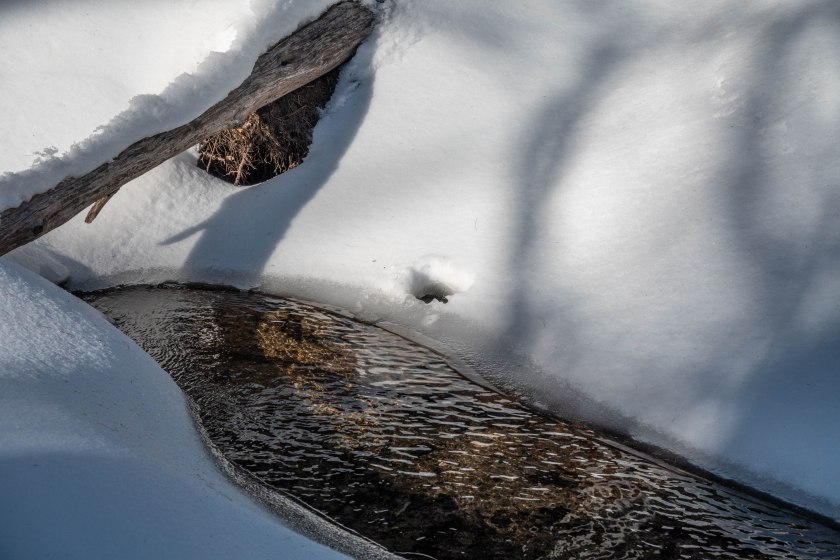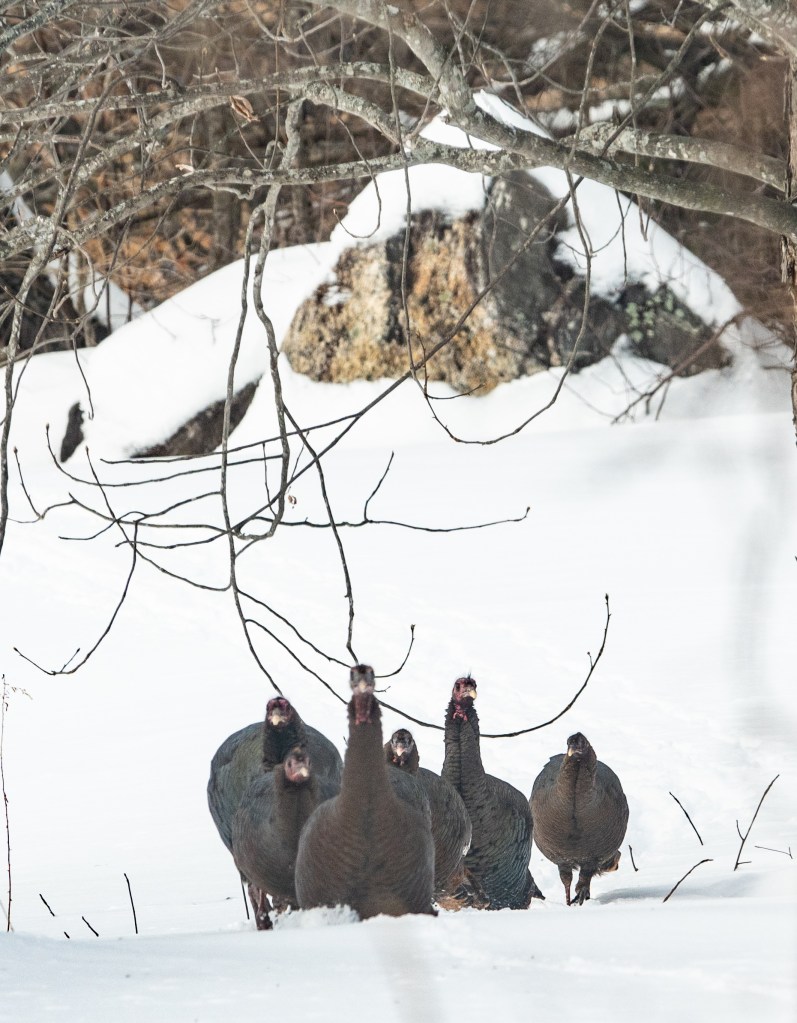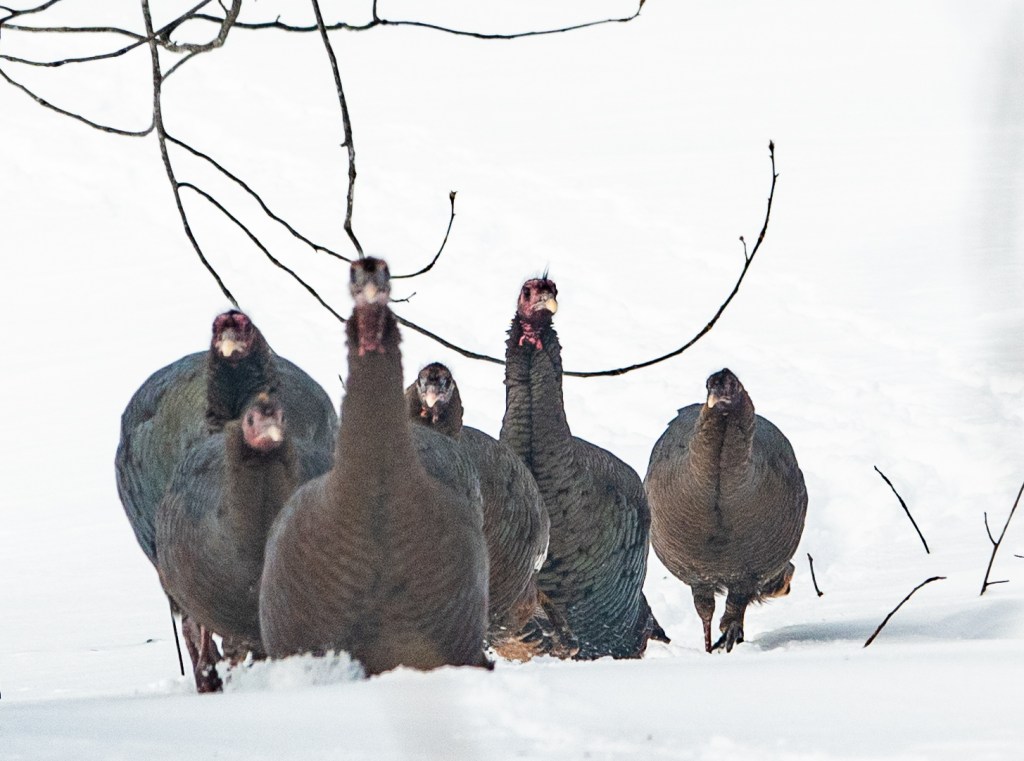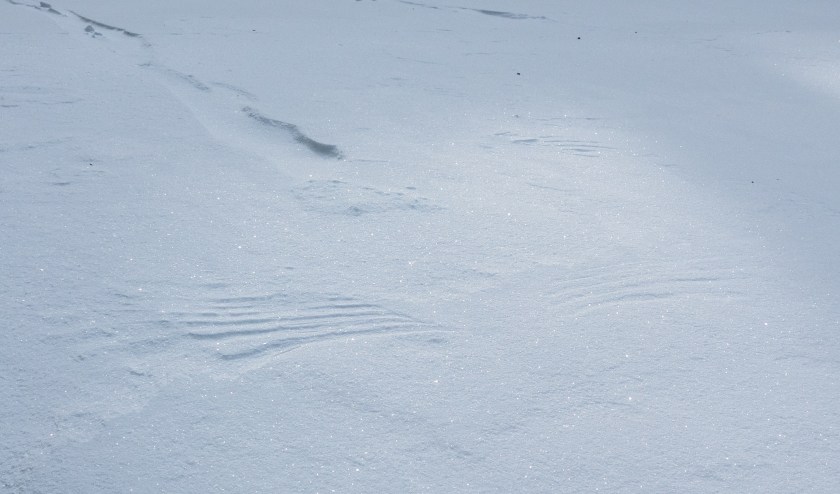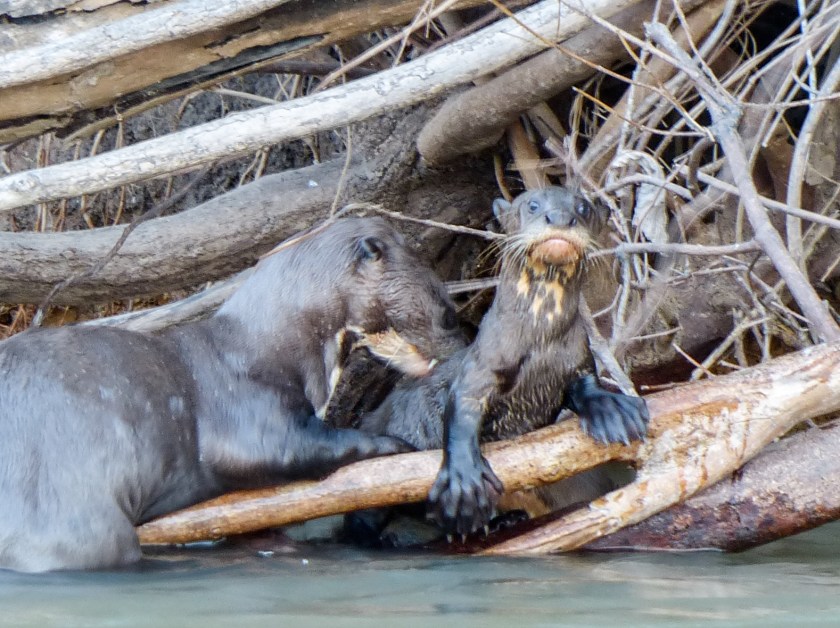In England, mink are an invasive foreign species, but here in Maine they are native and they stay active through the long hard winters. They are secretive, and mostly nocturnal, but last winter I did see one running around one of my ponds. Unusually for me, I had no camera. Sod’s Law, as we say in England. On another day, though, I discovered where one of them lived.
American Mink, Neovison vison, live in dens usually near water, under rocks or tree roots. I was walking towards a beaver wetland when I found this one. I saw some scat, and I realized that I was looking at a midden (a place where an animal or a group of animals habitually defecates) in the lower left of the photo below, and then I realized that a few feet away was a large hole, in the center of the picture, just the right size for a 2-foot long mink,.

There was a well-worn trail connecting the two: clearly a fastidious animal who preferred to use the outhouse. Not unlike humans, really. *

If you look closely at the scat (optional!), it contains fish scales and fish skin, typical of mink, who can swim 100 feet underwater (including under the ice) when they hunt. They are carnivores, and will eat small mammals like muskrats and chipmunks, and also snakes and frogs.

Mink travel along streams and the edges of ponds, leaving tracks like these:

Every now and again, you can find a perfectly cylindrical vertical hole , usually going right down through the snow into the water, where they have been hunting for something or other. Here are four of them!
This morning I found tracks leading down a hill, then a short slide into a bigger hole in the stream.

I find it reassuring to know that I have a healthy mink population, even if I never actually see them!
Since I don’t have my own photos of mink, here is a spectacular one to finish with:

I can’t resist ending with a mink story, even though it doesn’t cast my ancestors in a very good light. My grandfather, after ostrich farming and then gold-prospecting in Kenya, returned to the UK in the 1930’s and took up mink farming. As a result my grandmother knew her furs. When she was in her 80’s, and not very well off, she would occasionally go to Harrods fur department and ask to see the mink coats. When they brought some out she would wave them away dismissively, and say that these were made of male pelts, and she only wanted to see the suppler female ones. They were most impressed by her expertise. Of course, she never bought anything.
*This perfectly reasonable abhorrence of defecating in one’s residence is one reason India still has difficulty stopping the practice of heading for the great outdoors. Even when the government builds latrines, many people won’t use them because defecating indoors is viewed as unclean.
